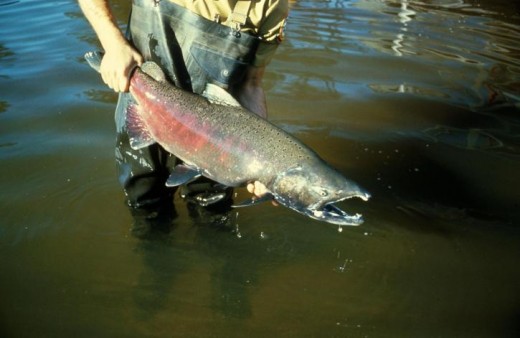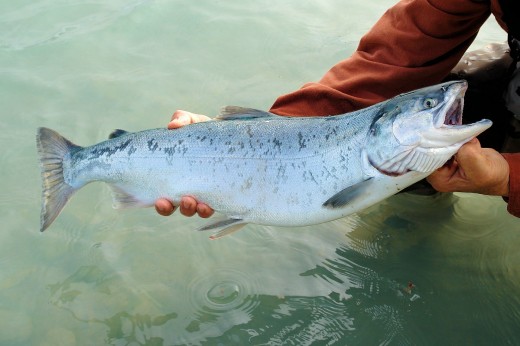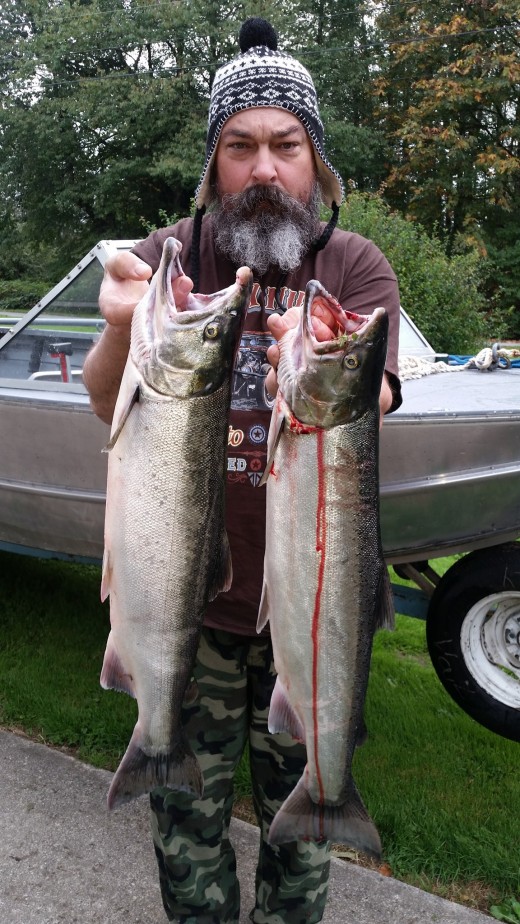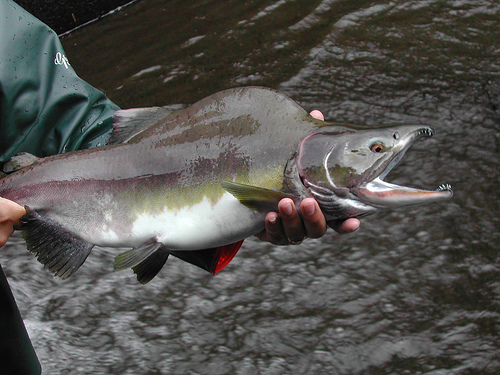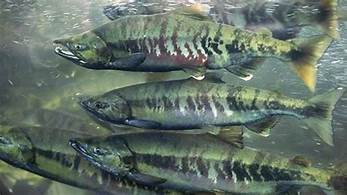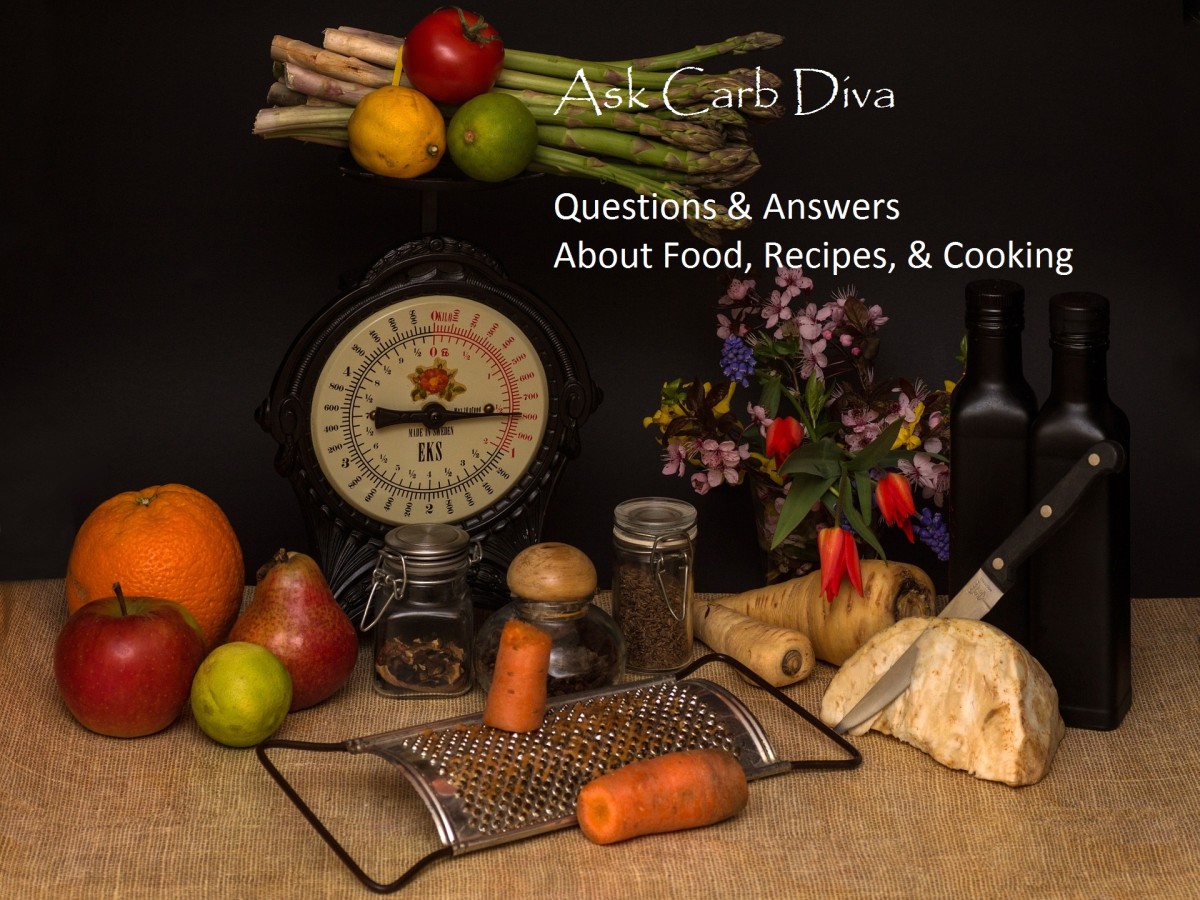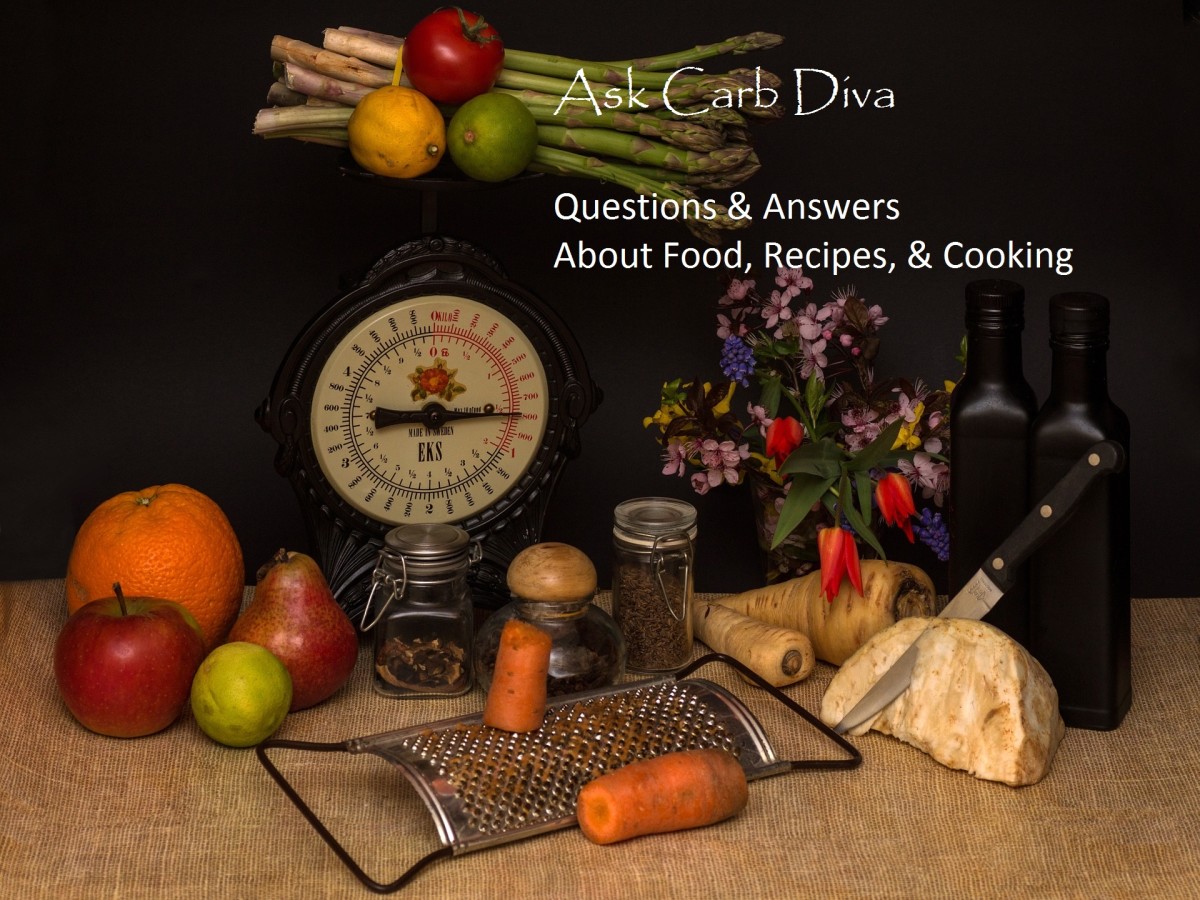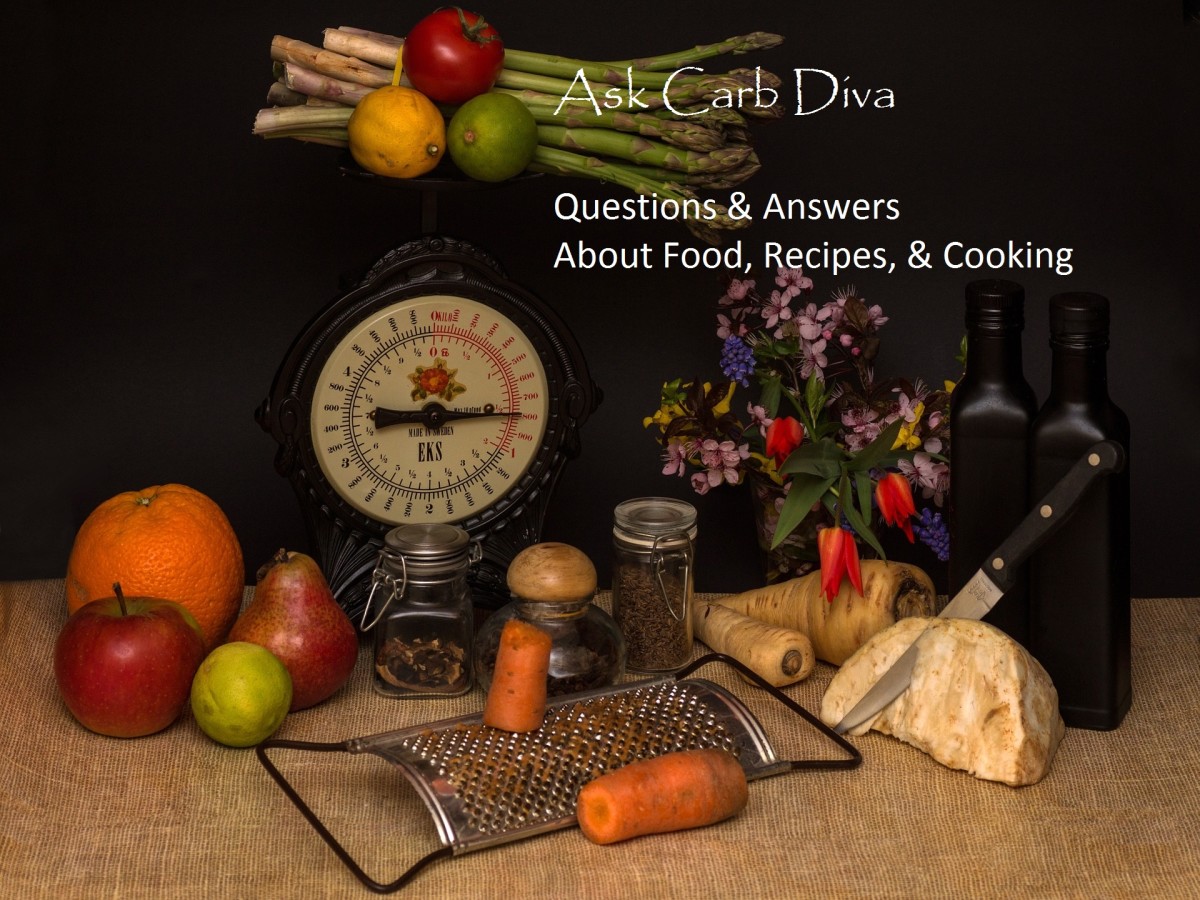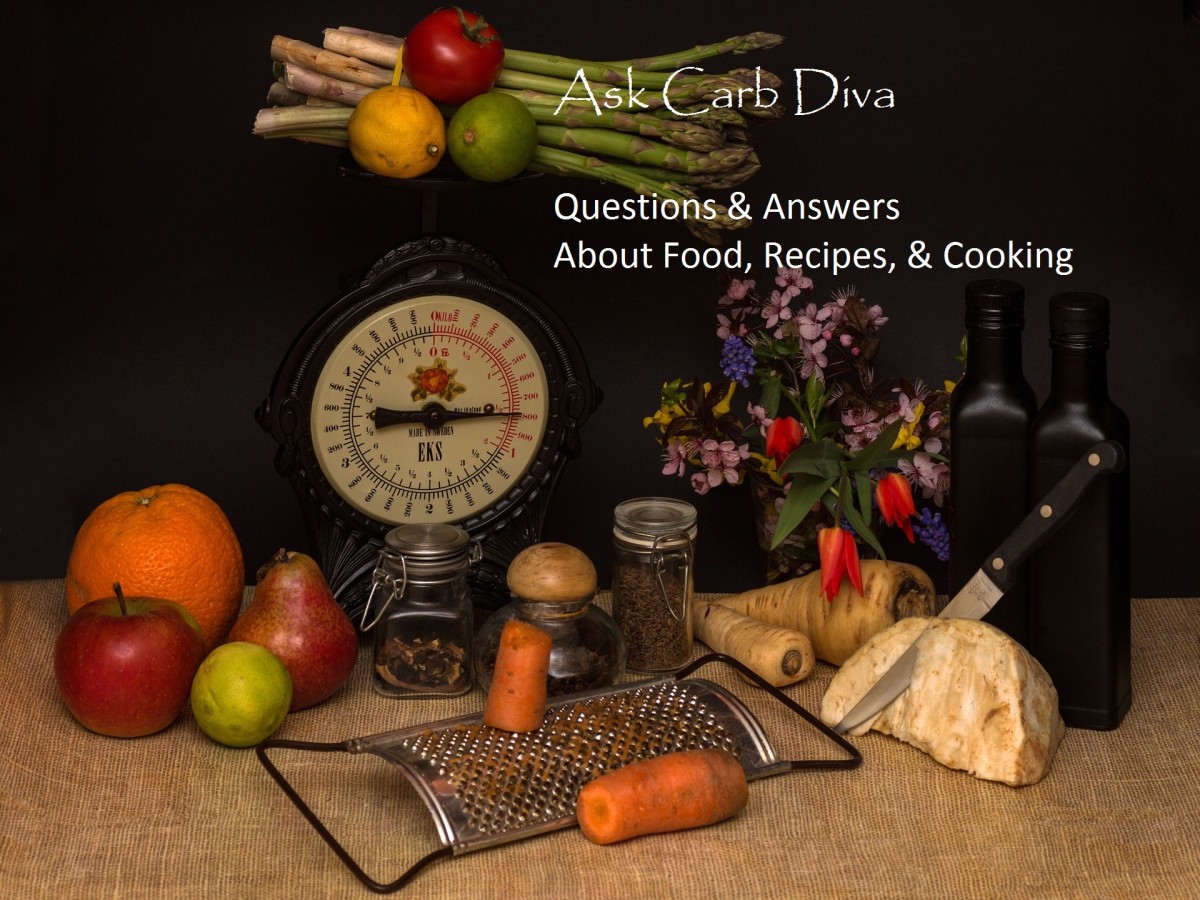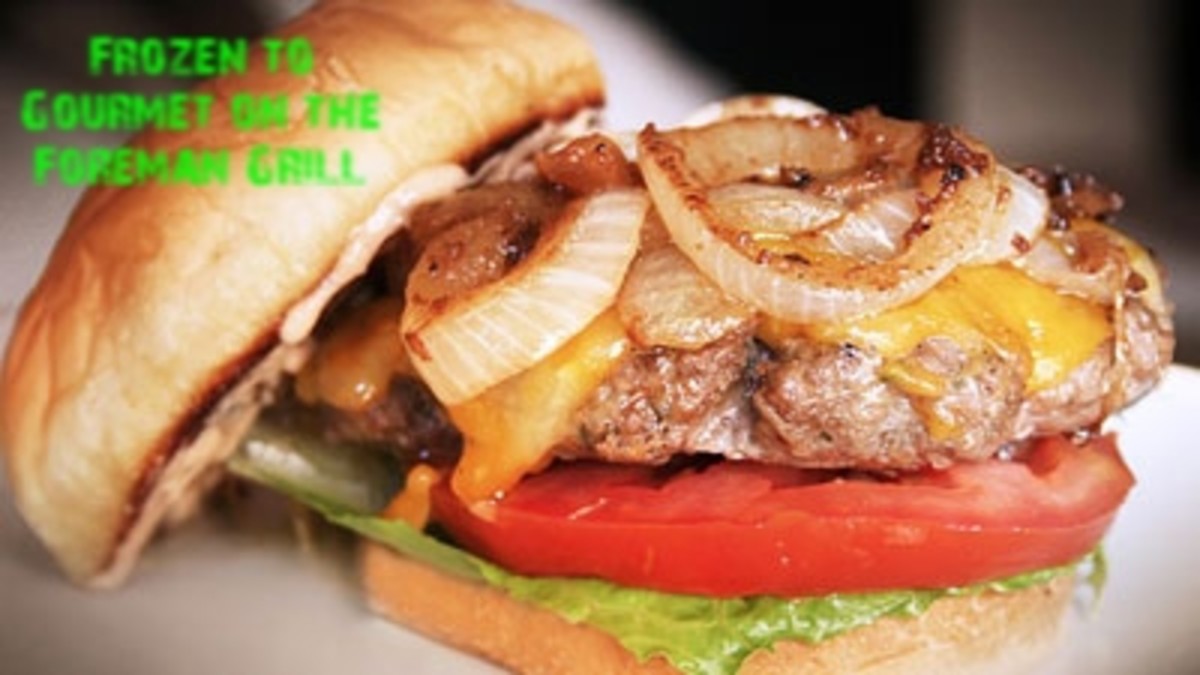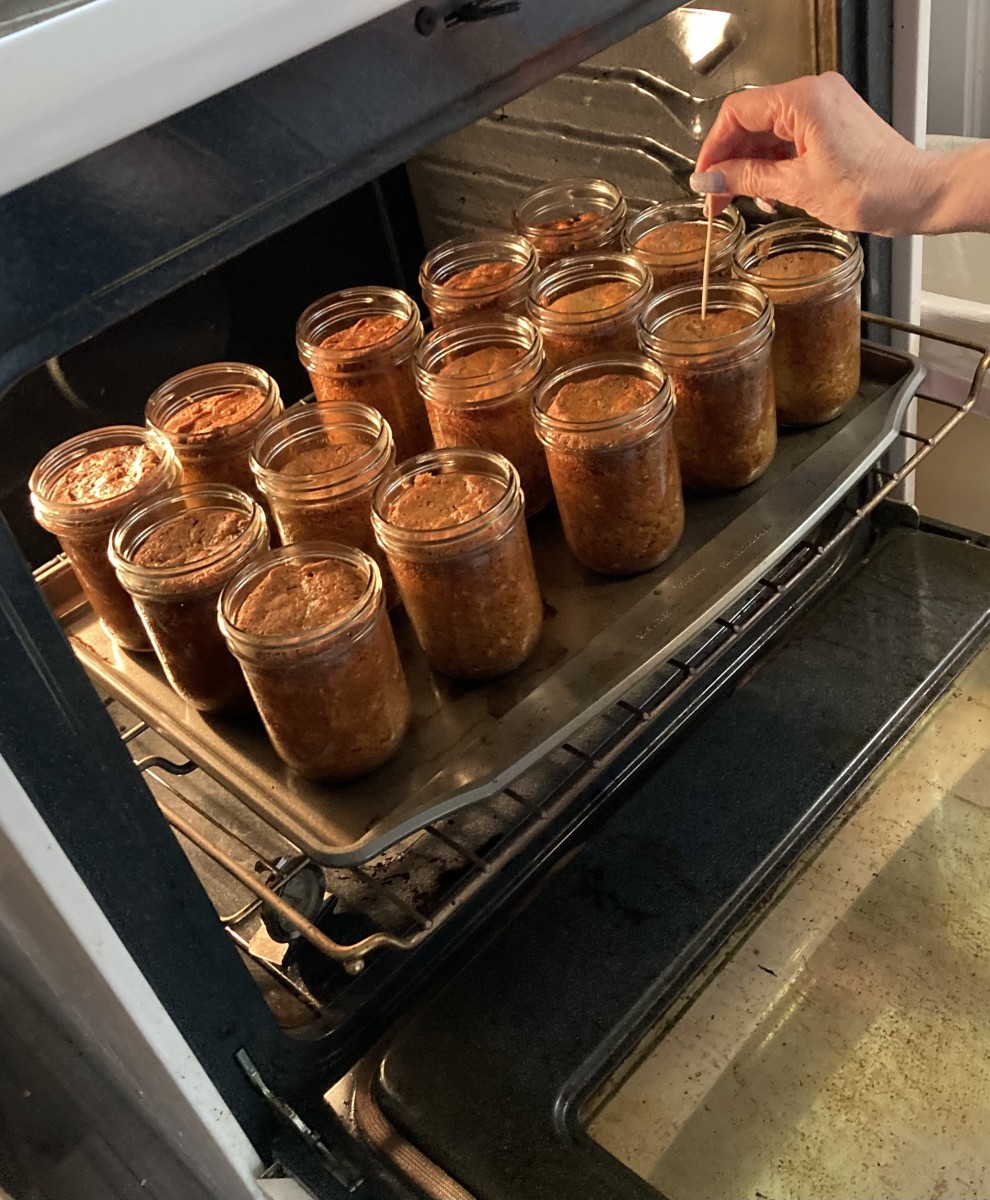Ask Carb Diva: Questions & Answers About Foods, Recipes, and Cooking, #54
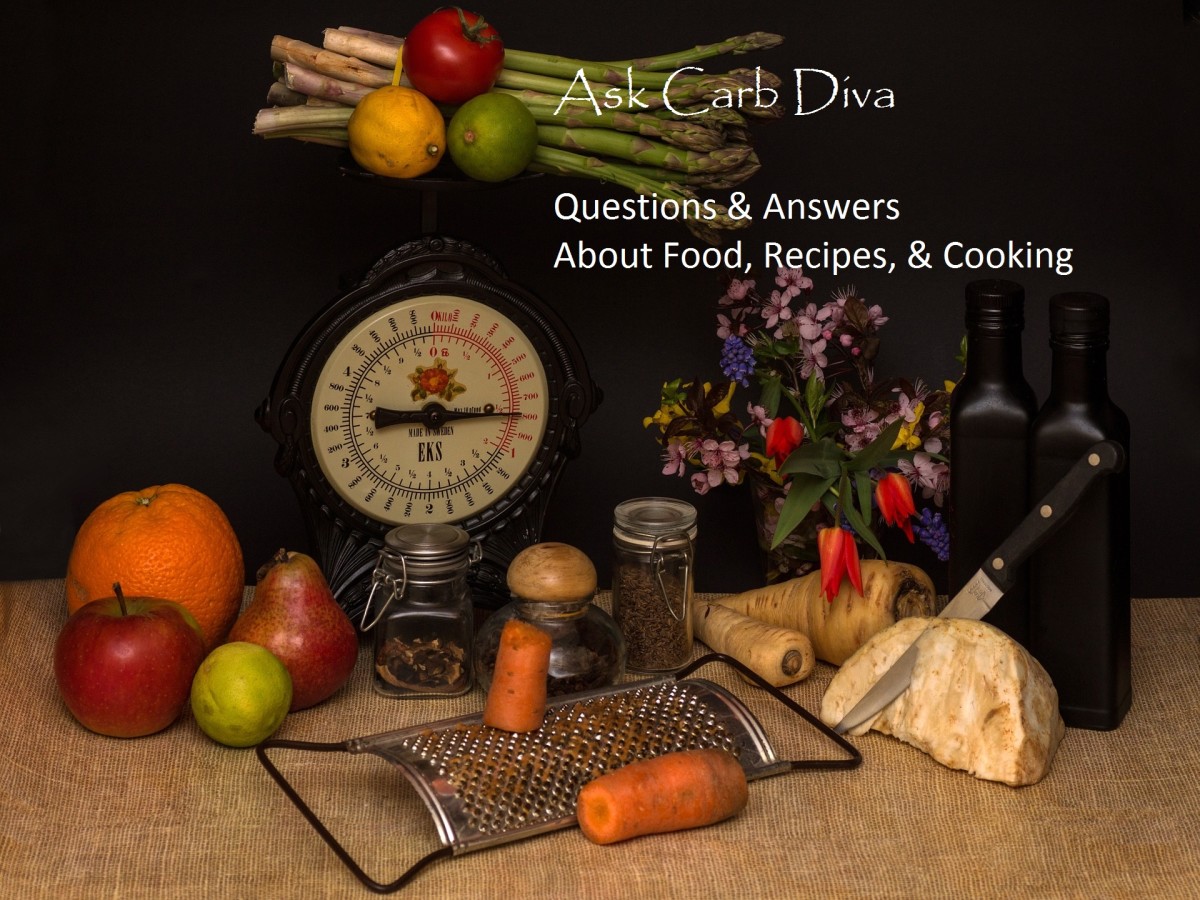
I'm Glad That You're Here
Welcome to my kitchen. This is where we can all gather (figuratively) around my island cooktop and:
- share stories about foods we fondly remember from our childhood
- ask for advice on the best kitchen tool
- look for suggestions on how to prepare a specific dish
- ask for and share recipes
...and much, much more. If you have food/recipe/technique questions, you can and will find the answers here. Let's get started and look at the questions that came into the mailbox last week.
Copper River Salmon, and All the Rest
Copper River Salmon.....why is it so darned delicious? It has a distinctive taste and I'm curious. :)
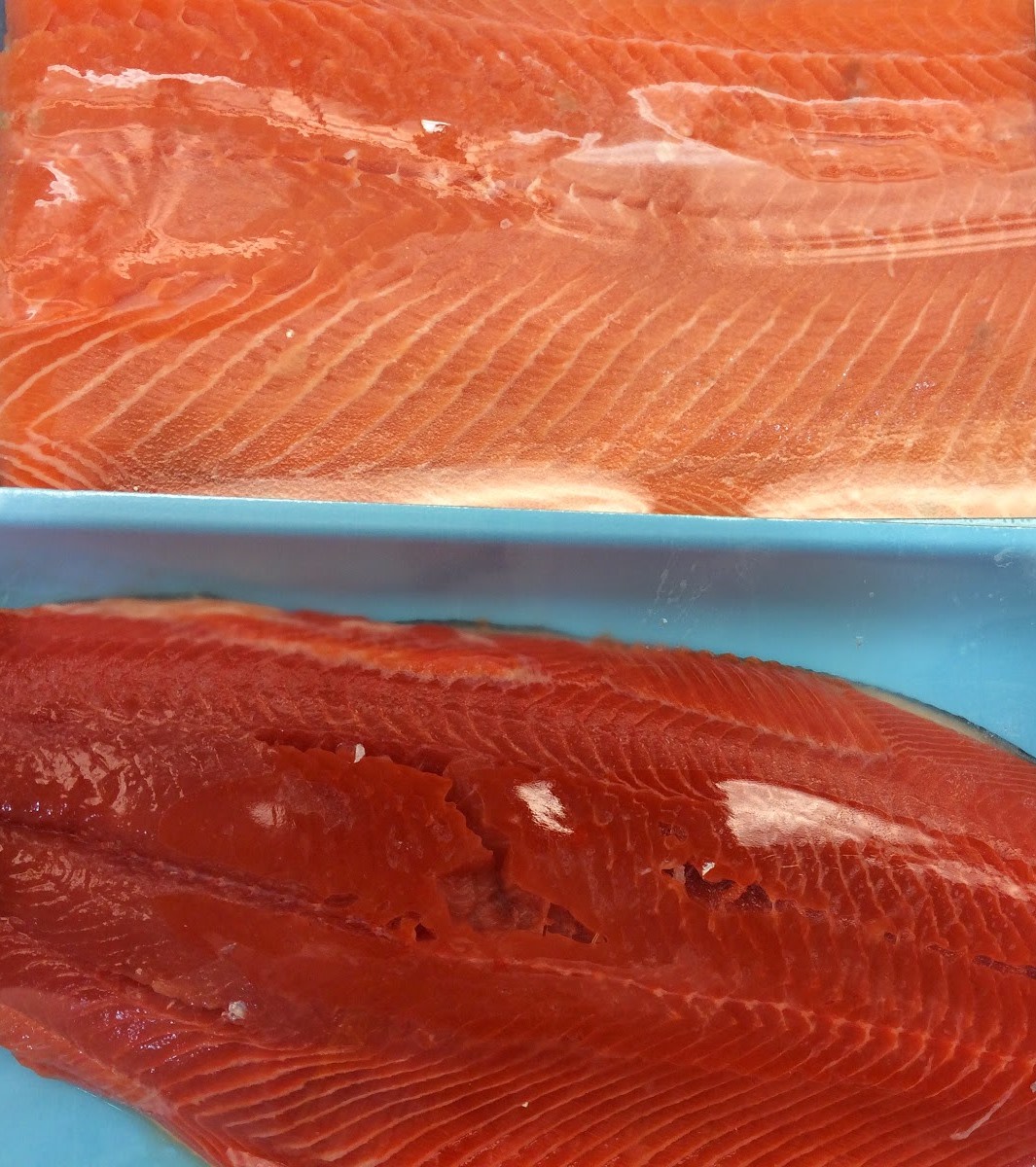





Bill, the world of salmon can be divided into two distinct categories. If you want wild-caught salmon, you are asking for Pacific salmon. And then, there is Atlantic salmon. That’s not to say that one cannot catch salmon in the Atlantic Ocean, but any Atlantic salmon that you purchase in the grocery store or at a fishmonger will be farm-raised.
Now, to complicate things a bit (why not?), we need to break down the Pacific salmon into several more distinct species. There are King, Sockeye, Silver, Pink, and Chum. To confuse things even further most of these come with one or more aliases.
But, you say, “I asked about Copper River salmon. You haven’t mentioned it at all.” That’s because “CR salmon” can be King, Sockeye, or Coho. CR isn’t a specific breed it’s just where some salmon are caught. It’s the environment, not the breed of salmon that distinguishes it from all others. Allow me to explain.
King (also known as Chinook)
This “king” of salmon has earned its name because it is the best tasting. It has a high fat content, and that’s what makes it so luscious.
Sockeye (also known as Red)
The meat of this salmon is bright orange-red and rich in flavor. They are called reds because when they move upstream to spawn they develop a startlingly bright red color.
Silver (also known as Coho Salmon)
These are so named because of their silvery skin. The flesh is bright red and is slightly less “fishy” tasting that King/Chinook.
Pink (also known as Humpy or Humpback)
This is the most common salmon. The name humpback is from the hump they develop on their backs when they are spawning. The meat is light-colored and has low-fat content. Pink salmon is usually canned or smoked.
Chum (and Silverbrite, Keta, or Dog)
These are pale in color and tend to be smaller than other salmon. It is lower in fat and is sold canned or frozen in foreign markets. The name “dog” is not a reference to quality, but because this salmon has dog-like teeth.
And Lastly, Copper River
Why are these the most expensive, most sought-after, and (indisputably) the tastiest salmon on planet earth? Look at the photo above. The pale-hued package is chum salmon—with artificial color added. The bottom package is Copper River salmon. The salmon (and the photo) are not color enhanced in any way. That deep red color, meaty flesh, and outstanding flavor are the result of the fish storing fat reserves to fuel their 300-mile migration through icy cold glacial waters to spawn.
The Copper River in south-central Alaska is 290 miles long and drains an area of more than 24,000 square miles (about the size of the state of West Virginia).
I mentioned that Copper River salmon are actually three species. Here’s a table to show the season for each type and how they vary nutritionally.
King (20 lb. average)
| Sockeye (6 lb. average)
| Coho (12 lb. average)
| |
|---|---|---|---|
Season
| May-June
| May-June
| Aug-Sept
|
Calories (per 7 oz. serving)
| 460
| 440
| 280
|
Fat
| 26 g
| 22 g
| 8 g
|
Protein
| 52 g
| 54 g
| 8 g
|
Omega-3's
| 3,400 mg
| 2,400 mg
| 2,200 mg
|
Sugar and Salt Substitutes, Part 1
What are your thoughts on the usage of salt and sugar substitutes? Certainly, some are ok to cook with and some not.
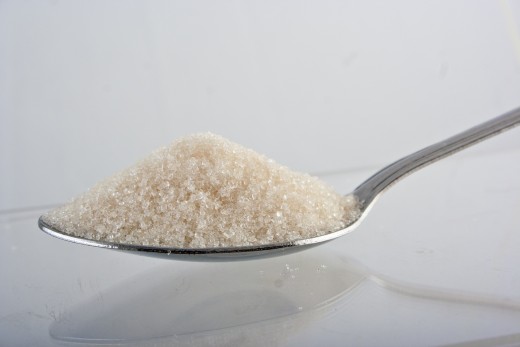
Eric whether or not we use salt or sugar (the real deal) or substitutes is a matter of health and preference in our cooking. I hope that I don't offend my chef friends, but baking is more of a science and so substitutions used there require a tad more strategy, so let's look at cooking first.
Salt Substitutes in Cooking
There is no argument that the desire for sodium is an acquired taste. The first thing that nourishes us is mother's milk which is sweet. If we never tasted salt we wouldn't desire it but golly sakes it does taste good, doesn't it? It's addictive.
High dietary sodium intake is associated with an increased risk of hypertension, which in turn is a risk factor for the development of cardiovascular disease. The World Health Organization (WHO) recommends that adults limit their consumption of sodium to less than 2,000 mg daily. Yes, there are salt substitutes made from potassium chloride, but are they safe or do they pose their own set of cautions and concerns?
While the typical intake of sodium is too high, the average global intake of potassium is below the WHO guidelines. So replacing sodium with potassium is a good thing, right? In higher quantities, potassium plays a trick on our taste receptors. It loses it's "saltiness". Although at first perceived as salty, it soon tastes off and bitter. So how can we reduce our use of real salt without relying on faux (potassium-based) salt? Here are a few suggestions:
- Onions (and all plants in the onion family) - Last week I described all of the various types of onions. You can add garlic to that list. Use onions, chives, leeks, and/or garlic in your cooking and you might find that you require less salt to boost the flavor profile of your dish.
- Fresh herbs and spices - If possible, use fresh herbs. Their flavors are clean and bright (not weak or muddy). To get the biggest bang, be sure to crush them first. That maxim also applies to dry herbs. Pour them into the palm of your hand and then crush them a bit, or briefly warm (saute) in oil. Heat will make the flavor "bloom".
- Sours (vinegar or citrus juices or zest) - Have you ever made a gravy or sauce, tasted it a bit, and decided that it was flat. You probably reached for the salt shaker to "add flavor." Next time, try a dash or two of something sour. What you use might depend on what you are trying to flavor. Use your imagination. Balsamic is a natural in pasta sauces. Lemon juice or zest would pair perfectly with a fish dish. Beef would love a splash of red wine vinegar, pork and orange are a marriage made in Heaven. Chicken is a flirty bird and loves them all.
Sugar Substitutes in Cooking
I can't think of many instances when one uses sweeteners in cooking (not baking) other than in some Asian dishes (sweet-sour flavors) or barbecue sauces. How can we limit our sugar intake? The key here is the glycemic index, or in other words, how carbohydrates we eat affect our blood glucose levels. I really don't like using artificial sweeteners. Even though there are some that are labeled "safe" they are difficult (impossible) to use on a one-to-one ratio in recipes. I prefer to use something that can be used in the same ratio as white sugar so that I don't have to completely re-invent a recipe. Here's the information on glycemic index levels from worst to best:
- High fructose corn syrup - 100
- White sugar - 68
- Honey - 62
- Molasses - 55
- Maple syrup (the real stuff, not Mrs. Butterworth's) - 54
- Barley syrup - 42
- Agave nectar - 15
Next week we'll look at salt and sugar substitutes in baking.
Why Do Onions Make Us Cry?
Interesting information about the onions, why are some so strong to the point of making one cry? I once had to wear a swimming mask when I attempted onion soup. (I'm not joking).
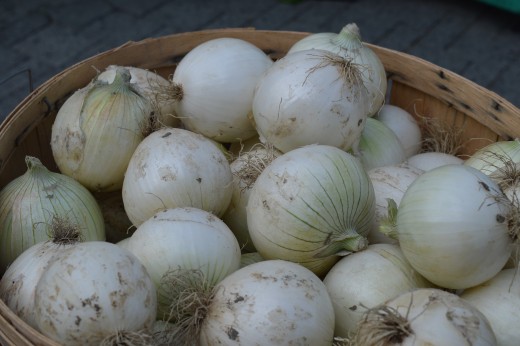
Mary, my family members have very little trouble with onions (although they don't cook that often). On the other hand, I weep profusely when slicing/dicing. I always assumed that it is because I am closer to the offending alliums than everyone else (I'm short).
So, I did some research and it turns out that the tears I shed have nothing to do with my lack of vertical-ness. If you cut or smash an onion the onion's cell break, allowing two separate substances (sulfenic acid and alliinase) to combine. When those two merge they create a chemical reaction. The resulting "tear gas" triggers a reflex that causes our eyes to release self-protecting tears.
Some onions are less tear-inducing than others. Onions that grow in low-sulfur soils store less sulfenic acid in their cells and thus have a milder, sweeter taste and are not as irritating to our eyes. The Vidalia onion is one of these.
So, what can we do to minimize the tears and save our mascara?
- The sharper the knife the less crushing or bruising of the onion cells.
- Soaking your onion after peeling but before chopping will help, but this also soaks away some of the flavor.
- Chilling the onions also helps but this too reduces the flavor.
- The Japanese have produced a tear-free onion but guess what, it doesn't have much taste either.
The online retailer who shall remain nameless (and has just about anything and everything you could ever want on the planet) sells "tear-free onion goggles." They are quite stylish and cost under $10.00.
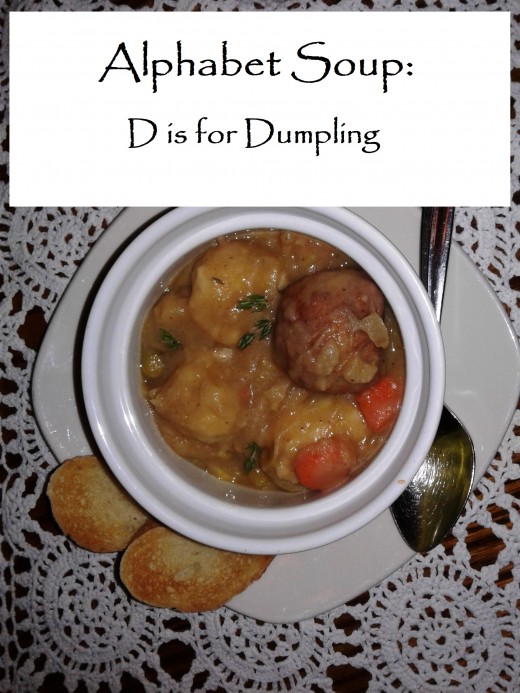
Continuing our alphabetical exploration of soups, here is my suggestion for the letter "D". My daughter and I made up this recipe a few weeks ago. It's so thick that it's almost like a stew. This is not a watery brothy appetizer. This is a rich savory bowl of comfort.
Ingredients for Soup
- 2 large carrots (about 2 cups), sliced
- 1 large stalk celery (about 1/2 cup), diced
- 1 medium onion (about 1 cup), chopped
- 1 tablespoon olive oil
- 4 cups vegetable broth
- 1 cup beef broth
- 2 bay leaves
- 1 sprig thyme
- 12 frozen turkey meatballs
- 1 cup frozen peas
- 20 potato dumplings, cooked (see recipe below)
- 1/2 cup mashed potato flakes
- 1/2 teaspoon black pepper
Instructions for Soup
- Saute carrots, celery, and onions in olive oil in a large stockpot about 5 minutes or until vegetables begin to soften.
- Add vegetable and beef broths, bay leaves, and thyme to pot; cover and bring to a simmer over medium heat.
- Add turkey meatballs and continue to simmer until meatballs are heated through.
- Stir in frozen peas and cooked potato dumplings. Continue to simmer until heated through, about 5 minutes.
- Stir in mashed potato flakes (uncooked) and black pepper, stirring constantly.
Ingredients for Potato Dumplings
- 1 cup mashed potatoes
- 1 cup all-purpose flour
- 1 large egg, room temperature
- 1 teaspoon garlic powder
- 1 teaspoon onion powder
- 1 teaspoon kosher salt
Instructions for Potato Dumplings
- Stir together the potatoes, flour, egg, and spices to a large mixing bowl.
- Shape dough into medium size balls, about 1/2 inch in diameter.
- Fill a large pot with water and bring to a gentle simmer.
- Drop 10 to 12 of the dumplings into boiling liquid, (the dumplings will sink to the bottom of the pot. When fully cooked they will float to the top).
- Remove the cooked dumplings from the pot with a slotted spoon.
- Repeat with remaining dumplings until all are cooked. Add to the soup (recipe above), or store, covered, in a refrigerator until ready to use, up to 2 days.
How To Prevent Fruit Flies
What is the best way to store bananas at room temperature without fruit flies hovering above them all the time? I always keep my kitchen clean yet these little bugs find a way in. Also, the tropical climate I live in gives them an opportunity to party all year. I wish I could buy 2 bananas every day so I could get to them before these little monsters. Unfortunately, that is not feasible, and I mostly buy a larger bunch that lasts about a week. Any tips you can share would be great. Thanks!
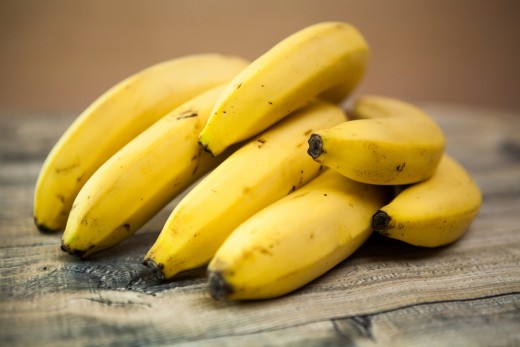
Rinita, once fruit flies enter our homes, they are a challenge to get rid of because they breed so quickly, profusely, and so often. Females lay about 500 eggs and those eggs hatch in as little as 24 hours. And then the cycle begins again.
So, how can you keep them from hovering on and over your bananas (and other fruits) and how can you eliminate them from your home? Here are some suggestions:
Protect - You can protect your fruits by covering them with a dome of netting. The netting should not touch the fruit. I remember that my mother had one in her home.
Chill Out - Of course, you can store your fruit in the refrigerator, but fruits taste better at room temperature and even though chilling slows the ripening process, chilled bananas look dreadful. The skins turn black and unappetizing.
Search and Destroy - Even in the cleanest of homes, fruit flies can breed in places other than your fruit bowl. Here are places that you might want to scrub and disinfect to help eliminate new families of fruit flies:
- recycling bins and indoor garbage cans
- damp mops, sponges, or dishrags
- potato and onion storage bins
- sink drains
Lure and Snare - You can lure the flies away from your fruit and trap them. Fruit flies are attracted to ripe fruit—they like apples and pears and bananas. But they LOVE the aroma of things that are fermenting(ed).
- Pour a little apple cider vinegar or red wine into a glass. Cover the glass with a layer of plastic (saran) wrap and secure in place with a rubber band. Poke a few small holes in the wrap (the tip of a pencil, pen, or toothpick will do) and then set the glass next to your basket/bowl of fruit.
- If you don't have plastic wrap, leave the glass uncovered but add a few drops of dishwashing liquid. The soap will alter the surface tension of the liquid so that the flies cannot escape.
- Place a little vinegar and a chunk of very ripe fruit in a small jar. Then, roll a piece of paper into a cone and stick it into the jar, placing the narrow opening down. The fruit flies will be drawn in, but won't be able to get out.
I hope that these tips help you with your fruit fly problem.

Last week I used the services of a temp to handle the incoming mail. I feared that all of the questions would focus on catnip and kippers, but as you can see she handled the task quite well. I've extended her contract for a few more weeks. Who knows, this could turn into a permanent assignment.
So, if you have a question please feel free to leave it in the comments below, or you can send me an email - lindalum52@gmail.com. (I promise to protect your identify if you wish to remain anonymous).
Have a great week!
© 2018 Linda Lum

